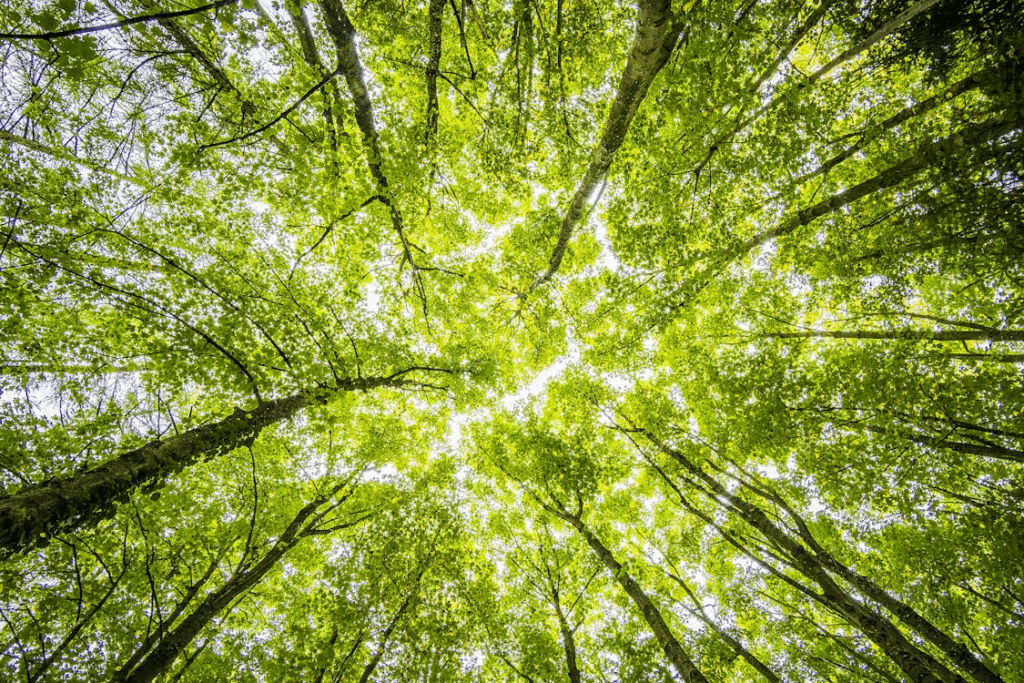How Trees on Farms Can Shape Canada’s Climate Future

Imagine a future where Canada’s farmlands are not just sources of food but bastions against climate change – teeming with a billion new trees, safeguarding our soil, water, and biodiversity. This vision is within reach, but unlocking it requires understanding and overcoming the critical challenges farmers face as our unsung environmental stewards. Sean Rudd, CEO of Korotu
Technology, shares groundbreaking findings on how strategic tree integration can transform Canadian agriculture.
While most of us think of farmers as providers of our food, in much of Southern Canada they are uniquely positioned as critical environmental stewards. Farms cover over 62 million hectares of Canadian land, a third of Southern Canada, and in addition to providing food and fibre farms are vital providers of export earnings and agri-food industry jobs for 2.3 million people.
Unlocking the billion-tree potential to protect our food supply

For over a century, farmers have known that planting and maintaining tree cover protects soil, water, biodiversity and more recently the climate. On farms, tree cover can take many forms, such as land set aside for woodlots, shelterbelts along the edges of fields and streams to hold back the wind or the flow of water, or more intensely planned agroforestry systems where
crops, livestock and trees are purposefully integrated. Just like farms and farmers, there is no one-size-fits-all approach for where trees are best placed on farms.
Today some form of tree planting initiative supporting farmers is in place in every province, and Korotu’s analysis has shown there is potential to scale these programs massively, to add over a billion trees to Canadian farms, while at the same time adding resilience to our food supply.
Unseen barriers — why farmers struggle to plant and maintain trees
We have been studying the adoption of agri-environmental programs, such as planting trees, and while all farmers we spoke to cared about the land and passing it on in a better state, few programs achieved uptake of even 50% due to rigid eligibility rules, complex applications, poor timing, and limited funding (as documented in our 2023 report “Increasing Adoption of Agri-Environmental Programmes by Ontario Producers”).

Building on that work, we conducted 35 interviews with farmers and industry experts to better understand the barriers affecting tree conservation and planting. We discovered there is intense pressure on all forms of land use and we risk losing more trees overall, and more farms to urban expansion, without better support for farmers. Five barriers were prominent:
- 41% of respondents cited lost revenue from land taken out of production, especially when land rental prices are high, pushing them to prioritize crop profits, even when conservation incentives are available.
- 54% of respondents reported that trees can obstruct machinery like sprayers and tractors, making it harder to plant, harvest, and apply inputs efficiently.
- 40% of respondents identified funding and labor as critical obstacles to planting and more importantly to maintaining tree cover, especially in the initial years following planting when tree care is required to prevent mortality.
- 42% of respondents noted funding applications are too complex, time-consuming, and timelines too rigid and often do not align with their availability
- 86% noted financial uncertainty and timing as an obstacle. Respondents noted that delays in funding approvals and reimbursements add uncertainty, and many programs only cover initial costs, neglecting the years of care needed to establish healthy, productive tree cover.
Coordinated Effort at Local and National Level Can Set Farmers Up for Success

Like many of the complex problems facing agriculture and conservation initiatives, the solutions to overcome the barriers to increase tree cover are complicated and require a coordinated effort among farmers, farm organizations, conservation authorities, industry and government. Using existing literature, previous work by Korotu, and insight from our survey respondents, the following recommendations contribute to building a pathway toward maintaining existing tree cover and increasing it on agricultural lands.
1. Farmers, like most of us, are busy and are most effective working on the farm. One farmer from Niagara, ON mentioned “I probably spend half my time doing government admin”. To address this, funding programs need to be simplified and centralized through a single point of
contact.
2. With local and trusted assistance, program adoption is more likely, and assisting organizations can operate across larger spatial scales. Our respondents showed enthusiasm and satisfaction when they received personalized support and technical assistance. For example, “TRCA did the paperwork, provided seed and labour, and covered 90% of the cost” (a farmer
from Bolton, ON). Strict mandates for conservation authorities has put this model in jeopardy despite historical successes.
3. Completing the applications and receiving the funding overcome only one of many hurdles. There is a clear need for funding to extend beyond planting new trees to include their monitoring and maintenance. To maintain and increase tree cover requires long-term ecosystem service payments that promote the retention of mature trees and on-going stewardship of new trees. Existing programs like the common agricultural policy program in Europe, the conservation reserve program in the United States, and alternative land use services (ALUS) in Canada offer examples that can be adopted and improved upon.
4. To overcome the lost revenue from taking land out of production, tree programs could include income-generating species for farmers who would like to add the benefits of agroforestry with fruit, nut, or maple syrup production. While this type of production will not be of interest to all farmers, it demonstrates a willingness from a program funder to work with farmers’ preferences to achieve the desired benefits from increased tree cover.
5. And at the community level, it’s time to get better baselines. Many communities today only have a general understanding of the change in canopy cover in their area — how many shelterbelts were removed, or trees planted. With remote sensing it is now possible to measure change in trees at the individual tree level, but without a baseline for comparative purposes, policy makers, farming groups, conservation authorities and government are unable to measure what is working.
Korotu’s Aroa Platform: A Tool for Agroforestry AdoptionKorotu’s Aroa Platform: A Tool for Agroforestry Adoption
Finally, developing practical planning tools is critical to addressing the adoption gap. Farmers want user-friendly platforms that consolidate funding information, technical guidance, and planning tools, including step-by-step adoption guides and economic calculators. And community leaders want to understand and track farmers’ contribution to the environment. Korotu’s Aroa Platform directly responds to these critical needs. Its scenario-building tool uses AI to understand the current tree cover at region and farm level and suggest practical, land-specific strategies, while its economic analysis feature helps farmers estimate short-term costs and long-term benefits. Finally, the platform identifies funding programs and streamlines application navigation.

We invite organizations, policymakers, and farmers to connect and collaborate with us on this vital mission to integrate a billion trees into Canada’s farming landscape, shaping a more resilient climate future.
This project was funded in part by the Governments of Canada and Ontario under the Sustainable Canadian Agricultural Partnership (Sustainable CAP), a federal-provincial-territorial initiative.














